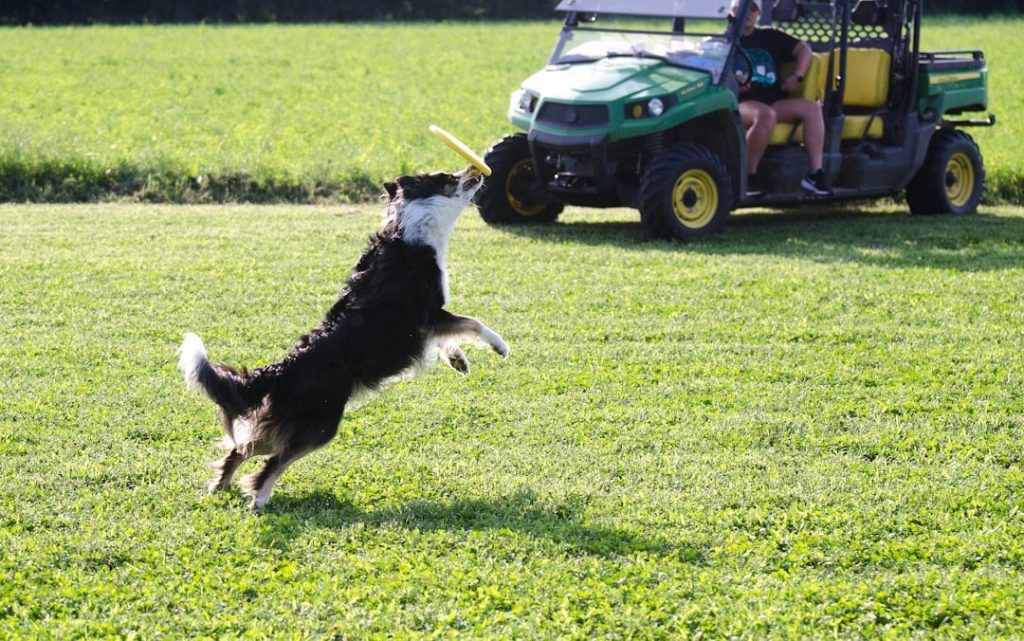Physical Address
304 North Cardinal St.
Dorchester Center, MA 02124
Physical Address
304 North Cardinal St.
Dorchester Center, MA 02124

As our dogs age, it’s natural to focus on their physical needs—managing arthritis, adjusting their diet, and ensuring they get enough rest. But just like us, a dog’s mental health is just as important as their physical well-being. Keeping a senior dog’s mind active and engaged is one of the most loving and effective ways to help them live a happy, healthy, and dignified life. Mental enrichment can help combat boredom, reduce anxiety, and even slow down age-related cognitive decline.
This guide will help you understand why your aging companion needs mental health support and provide you with a variety of simple, effective ways to keep their brain sharp and their spirit bright.
The aging process affects a dog’s brain just as it affects their body. It’s important to understand these normal changes and recognize the signs that may point to a more serious issue.
Many older dogs experience some level of cognitive decline, a condition often called Canine Cognitive Dysfunction (CCD), or “dog dementia.” It’s a neurodegenerative disease that’s similar to Alzheimer’s in humans. It can cause a lot of confusion, disorientation, changes in sleep patterns, and a loss of learned behaviors. Recognizing these changes early is the first step to managing them.
With physical limitations and cognitive changes, your senior dog might also go through emotional shifts. They might become more anxious, especially when left alone, or more irritable and less tolerant of other pets or children. You might notice they get clingier, or perhaps they start to withdraw and seek isolation. These behaviors often come from confusion and frustration, and they’re clear signals that your dog needs your gentle guidance and support.
It can be hard to know what your older dog is feeling, but their behavior often gives us clues. Watch for these common signs:
Engaging your senior dog’s mind is not just a fun activity; it’s a powerful tool for improving their overall health and happiness.
Just like a muscle, the brain benefits from exercise. Providing new challenges and learning opportunities helps to form new neural pathways, which can slow down the progression of cognitive decline.
Mental stimulation provides a healthy outlet for pent-up energy and anxiety. Instead of acting out, your dog can focus their attention on a rewarding activity, which helps to calm their mind and body.
Participating in games and training sessions together is a wonderful way to connect with your senior dog. These shared moments reinforce your bond and give your pet a sense of security and purpose.
Many mental enrichment activities, like scent work or puzzle toys, require a little bit of physical movement. This can be a great way to encourage low-impact exercise for a dog with limited mobility, helping them maintain a healthy weight and muscle mass without overexerting their joints.
You don’t need a lot of fancy equipment to keep your dog’s mind sharp. Many of the best activities use things you already have at home.
These toys are fantastic for engaging your dog’s problem-solving skills and satisfying their natural foraging instincts. Start with a simple treat-dispensing ball, then move on to more complex puzzles where they have to slide or push objects to get a reward.
A dog’s sense of smell is their most powerful tool. Engaging their nose is a wonderful way to provide mental stimulation without a lot of physical effort. Start with a simple “find the treat” game by hiding a high-value treat in one hand and letting them sniff it out. You can then progress to hiding treats around a room or in a “snuffle mat” for a longer, more engaging activity.
Even an older dog can learn new tricks! Keep training sessions very short (3-5 minutes) and positive. You can work on simple commands they already know, like “stay” or “come,” to reinforce their memory. You can also teach them a new, low-impact trick, such as “shake a paw” or “touch” (where they touch their nose to your hand).
Modify your playtime to suit their energy levels. Instead of a long game of fetch, try a gentle game of tug-of-war. You can also play “hide and seek” by having them stay in one room while you hide and then call them to come find you. This activity is great for their mind and your bond with them.
Just like with people, certain types of music can have a calming effect on dogs. Play soft, classical music or special sound therapy tracks designed for dogs to help reduce anxiety and create a peaceful environment.
Controlled and positive social interactions are great for your dog’s mental health. Arrange gentle play dates with a calm, friendly dog they know, or invite a few close friends over for a quiet visit. Always monitor these interactions carefully to ensure your dog doesn’t get overwhelmed.
Ready to find the perfect gear to keep your senior dog’s mind sharp? Check out these top picks to get you started on your enrichment journey!

The way your home is set up can make a big difference in your senior dog’s mental state.
Make sure your dog has a quiet, comfortable space to retreat to, such as a cozy bed in a low-traffic area. Add items they love, like a favorite blanket or a toy they can chew. Place a puzzle toy or a snuffle mat near their bed for easy access to a fun activity.
Instead of a brisk walk, make your outings a “sniffari.” Let your dog lead the way, allowing them to stop and smell everything they want. This provides incredible mental stimulation without putting stress on their joints. Consider exploring new routes to keep things interesting.
To prevent your dog from getting bored with their toys, rotate them regularly. Put a few toys away and bring them back out after a week or two. This will make an old toy feel new and exciting.
It’s crucial to adapt these activities to your dog’s physical capabilities.
If your dog has joint pain, choose activities that don’t involve running, jumping, or quick turns. Games like “find the treat,” where treats are placed in easy-to-reach locations, are perfect. You can also use a flirt pole for controlled, low-impact play that still uses their chase drive. For more information on physical support for your aging pet, take a look at our comprehensive guide on how mobility aids can improve life for aging pets.
If your dog is losing their sight or hearing, you can still play with them. For dogs with poor vision, rely on sound-based toys or use scents to help them locate treats. For dogs with hearing loss, use hand signals or a flashlight to communicate and play games. They’re still just as smart, and you can find new ways to connect.
Senior dogs tire more easily. Instead of one long enrichment session, break it up into several short, 5-10 minute sessions throughout the day. This prevents over-exertion and keeps them engaged without becoming exhausted.
A healthy diet is a key part of supporting your senior dog’s mental health.
Found in fish oil, these fatty acids are powerful antioxidants that can help reduce inflammation and support brain health. Many senior dog foods and supplements are fortified with them.
Vitamins E and C, as well as flavonoids, can help combat the oxidative stress that contributes to cognitive decline. Look for dog foods that contain fruits, vegetables, and other natural sources of antioxidants.
Your veterinarian can recommend specific supplements designed to support your dog’s brain health. These may include ingredients like medium-chain triglycerides (MCTs) or S-Adenosyl-L-Methionine (SAMe). Always consult your vet before adding any new supplements to your dog’s diet.
Patience and understanding are the best gifts you can give your aging dog.
A predictable daily routine for meals, potty breaks, and playtime provides a sense of security and stability, which can be especially comforting for a dog with cognitive decline.
Be patient if your dog seems confused or forgets a command. Never get frustrated. Instead, use a calm voice and plenty of positive reinforcement to encourage them. Your calm presence is often the best comfort.
Some signs of cognitive decline or anxiety may require medical intervention.
If you notice any of the following, it’s time to talk to your vet:
Your vet may suggest working with a certified veterinary behaviorist. These professionals can provide a tailored plan that includes both behavioral strategies and potential medications to help manage more severe cases of anxiety or cognitive dysfunction.
Q: Can mental enrichment really slow down dementia in dogs?
A: Research suggests that an enriched environment and mental stimulation can help maintain brain function and may slow the progression of cognitive decline. It’s not a cure, but it’s a powerful tool for management.
Q: How can I tell if a puzzle toy is too difficult for my senior dog?
A: If your dog quickly loses interest, gets frustrated, or gives up on a toy, it’s likely too hard. Start with simpler toys that have a high rate of success and gradually increase the difficulty as they gain confidence.
Q: My dog has arthritis and can’t walk very well. What are some good non-physical mental games?
A: Scent work is a fantastic option. You can hide treats under a blanket or in a puzzle toy right next to their bed. You can also use soft toys for a gentle game of “find it,” where they use their nose and not their body to find the object.
Caring for an aging dog is a journey of patience, love, and understanding. By making mental enrichment a regular part of their routine, you’re not just keeping them busy; you’re nurturing their mind and spirit. It’s a way to honor their love and loyalty and ensure that their golden years are filled with comfort, happiness, and purpose. With a little effort, you can help your best friend continue to be a happy and engaged member of your family for years to come.